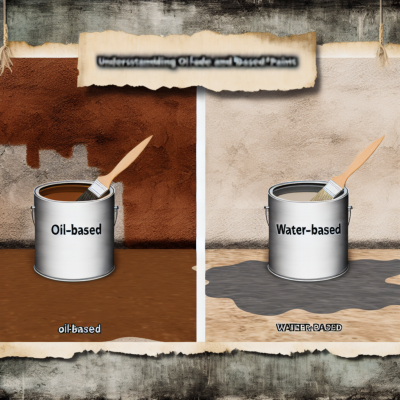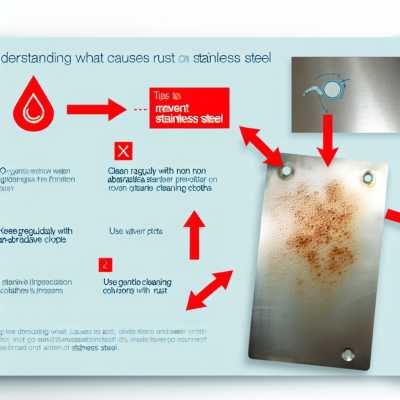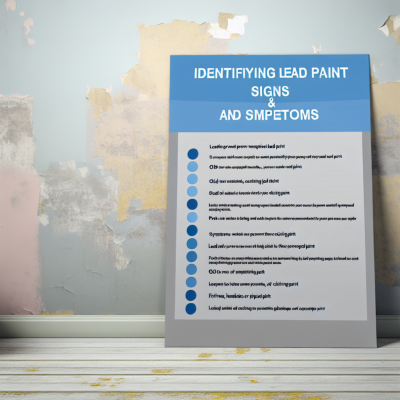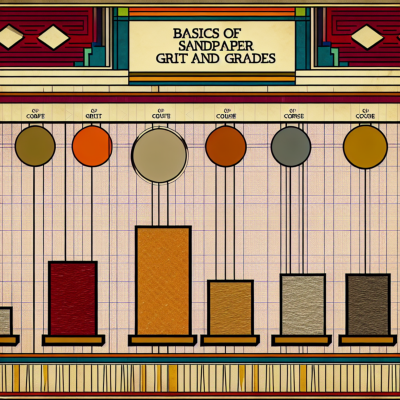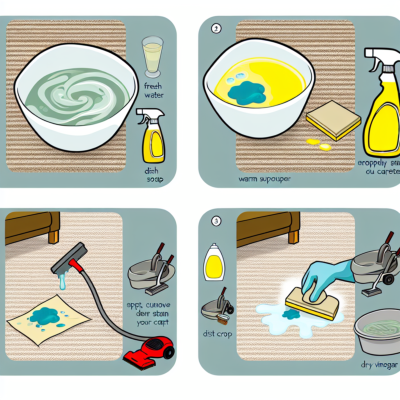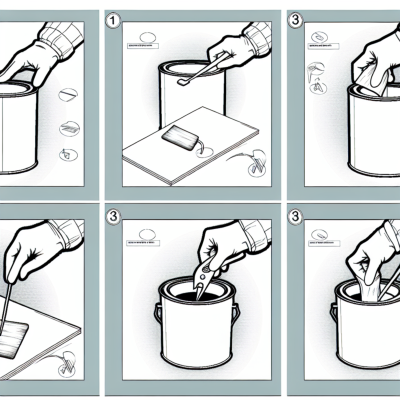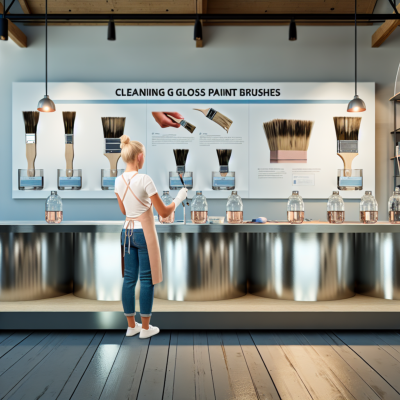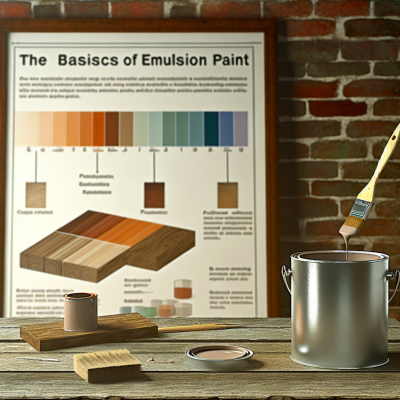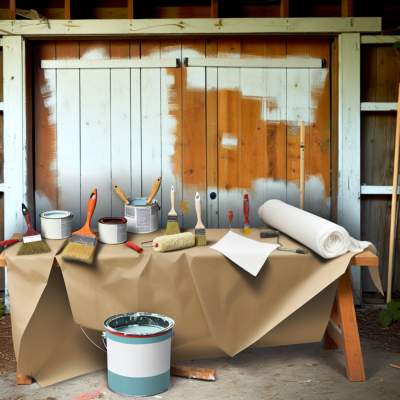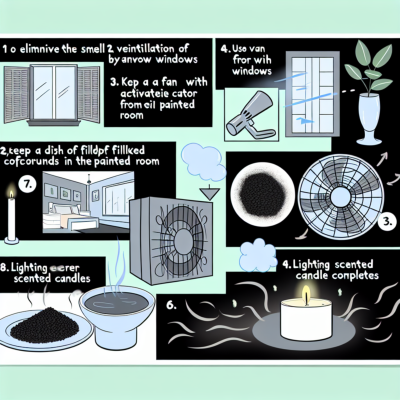Painting aluminium surfaces like windows and doors enhances their appearance while protecting them from weathering, but proper preparation is key. An all-important first step is selecting the right first to promote adhesion before applying the best paint for aluminium. Consider corrosion-resistant primers designed for metal alongside durable exterior acrylic or epoxy paints. Spraying aluminium surfaces ensures an even coat, although careful brushwork produces quality results. Follow vital steps like cleaning, sanding to smooth surfaces, and applying multiple thin layers of aluminium paint for flawless, long-lasting protection.
Aluminium surfaces are widely used in various industries due to their lightweight, durability, and corrosion resistance. However, to enhance their appearance and protect them from environmental factors, painting aluminium surfaces is often necessary. Whether you are a professional painter or a DIY enthusiast, this comprehensive guide will provide you with all the information you need to achieve a flawless and long-lasting finish.
Preparation is the key to success
Before you start painting aluminium surfaces, it is crucial to prepare them properly. The first step is to clean the surface thoroughly to remove any dirt, grease, or oxidation. Use a mild detergent and water solution and scrub the surface gently with a brush or sponge. Rinse the surface with clean water and allow it to dry completely. This will ensure that the paint adheres properly and provides a smooth finish.
Sanding is another important step in the preparation process. Use a fine-grit sandpaper to lightly sand the surface. This will help in removing any roughness or imperfections and promote better adhesion. After sanding, clean the surface again to remove any dust or debris.
Choosing the right paint
When it comes to painting aluminium surfaces, it is essential to choose the right paint that is specifically designed for this material. Look for paints that are labelled as 'aluminium paint' or 'metal paint.' These paints are formulated to adhere well to aluminium surfaces and provide excellent durability and corrosion resistance.
Additionally, consider the finish you want to achieve. Aluminium surfaces can be painted with various finishes, such as matte, satin, or glossy. Each finish has its own aesthetic appeal and level of sheen. Select the finish that complements the overall design and style of the project.
Application techniques
When applying paint to aluminium surfaces, it is essential to follow the manufacturer's instructions for the specific paint you are using. Use a high-quality brush or roller to apply the paint evenly and smoothly. Start from one corner of the surface and work your way towards the opposite corner, using long, even strokes.
If you are painting a large area, consider using a paint sprayer for a more uniform finish. Make sure to wear protective clothing, such as goggles and a mask, to avoid inhaling fumes or getting paint in your eyes.
By following these preparation and application techniques, you can achieve a professional-looking paint job on aluminium surfaces. Remember to allow the paint to dry completely before handling or exposing the surface to any moisture or harsh conditions. With proper care and maintenance, your painted aluminium surfaces will stay vibrant and protected for years to come.
Essentials of Painting Aluminium
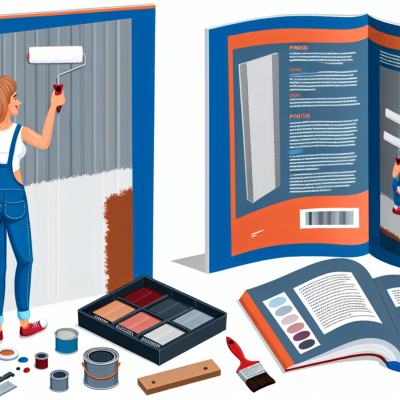
When it comes to painting aluminium surfaces, there are several essential factors to consider in order to achieve the best results. Whether you are painting aluminium windows, doors, or any other aluminium surface, following these guidelines will ensure a successful and long-lasting paint job.
Surface Preparation:
- Thoroughly clean the aluminium surface with a mild detergent and water to remove any dirt, grease, or contaminants.
- Sand the surface using a fine-grit sandpaper or sanding block to create a smooth and roughened surface for better paint adhesion.
- Remove any sanding dust or debris by wiping the surface with a clean, lint-free cloth.
Priming:
- Apply a coat of primer specifically designed for aluminium surfaces. This will provide a protective barrier and enhance the adhesion of the paint.
- Allow the primer to dry completely according to the manufacturer's instructions.
- Sand the primed surface lightly with a fine-grit sandpaper to create an even and smooth surface for the topcoat.
- Remove any sanding dust or debris by wiping the surface with a clean, lint-free cloth.
Painting:
- Choose a high-quality paint suitable for aluminium surfaces. Acrylic or epoxy-based paints are commonly used for painting aluminium.
- Apply the paint using a brush, roller, or spray gun, following the manufacturer's instructions for the specific type of paint.
- Apply multiple thin coats of paint rather than one thick coat to achieve a more even and durable finish.
- Allow each coat of paint to dry completely before applying the next coat.
Finishing:
- Inspect the painted surface for any imperfections or areas that may require touch-ups.
- If necessary, lightly sand the dried paint using a fine-grit sandpaper to smoothen the surface.
- Wipe the surface with a clean, lint-free cloth to remove any sanding dust.
- Apply a clear topcoat or sealer to protect the paint and enhance its longevity.
By following these essential steps, you can ensure a professional and durable paint job on aluminium surfaces. Remember to always read and follow the instructions provided by the paint and primer manufacturers for the best results.
What do you need to paint aluminum?
Painting aluminum surfaces can be a challenging task, but with the right materials and tools, you can achieve a professional and long-lasting finish. Here are some essential items you will need:
1. Aluminum primer: Before applying paint, it is crucial to use a primer specifically designed for aluminum surfaces. This will ensure proper adhesion and improve the durability of the paint job.
2. High-quality paint: Choose a paint that is suitable for use on metal surfaces, such as an acrylic or epoxy-based paint. It should also be formulated to resist corrosion and provide good coverage.
3. Paint brushes or rollers: Depending on the size and complexity of the aluminum surface, you may need different types of brushes or rollers. For smaller areas, a brush with synthetic bristles will provide more control, while a foam roller can be efficient for larger surfaces.
4. Sandpaper or sanding block: Proper surface preparation is essential for a successful paint job. Use sandpaper or a sanding block to remove any existing paint, rust, or imperfections from the aluminum surface. This will help the new paint adhere better and provide a smooth finish.
5. Cleaning supplies: Before painting, make sure to clean the aluminum surface thoroughly to remove any dirt, grease, or debris. Use a mild detergent or a specialized aluminum cleaner and rinse with water. Allow the surface to dry completely before applying the primer.
6. Protective gear: When working with paint and other chemicals, it is important to protect yourself. Wear gloves, safety goggles, and a mask to prevent any contact with the skin, eyes, or inhalation of fumes.
7. Proper ventilation: Ensure that you are working in a well-ventilated area or use a fan or exhaust system to remove any paint fumes. This will help minimize the risk of respiratory issues and ensure a faster drying time for the paint.
8. Drop cloths or plastic sheets: To protect surrounding surfaces from paint splatters or drips, use drop cloths or plastic sheets. Cover any areas that are not intended to be painted, such as windows, doors, or fixtures.
Remember, the key to a successful paint job on aluminum surfaces is proper surface preparation and the use of high-quality materials. Take your time, follow the manufacturer's instructions, and you'll be able to achieve a beautiful and durable finish.
What are the ingredients in aluminum paint?
Aluminum paint is a type of paint that contains aluminum powder as its main ingredient. It is commonly used for painting aluminum surfaces, such as aluminum siding, windows, or doors, to provide a protective and decorative coating.
In addition to aluminum powder, aluminum paint also contains various other ingredients that contribute to its properties and performance. These ingredients may vary depending on the specific brand and formulation of the paint, but some common components include:
| Ingredient | Function |
|---|---|
| Pigments | Provide color and opacity to the paint. |
| Binders | Hold the paint together and provide adhesion to the surface. |
| Solvents | Dissolve the binders and pigments and help with the application of the paint. |
| Thickeners | Give the paint its desired consistency and prevent sagging or dripping. |
| Additives | Enhance the paint's properties, such as drying time, durability, or resistance to weathering. |
It is important to follow the manufacturer's instructions and safety guidelines when using aluminum paint, as some formulations may contain hazardous substances. Always work in a well-ventilated area and wear appropriate protective equipment, such as gloves and goggles, to ensure safe handling and application.
Choosing the Right Primer and Paint for Aluminium

Painting aluminium surfaces requires careful consideration of the type of primer and paint to use. The right combination of primer and paint can ensure a long-lasting and durable finish that can withstand the challenges of harsh weather conditions and regular wear and tear.
When it comes to choosing a primer for aluminium, it is important to select one that is specifically designed for use on metal surfaces. Look for a primer that is formulated to adhere to aluminium and provide a strong bond. This will help to prevent peeling, cracking, and other issues that can arise when using the wrong primer.
Additionally, consider using a primer that offers corrosion resistance. Aluminium surfaces are prone to oxidation and can develop corrosion over time. A primer with corrosion resistance properties can help to protect the aluminium surface and prolong the life of the paint job.
When selecting a paint for aluminium, it is essential to choose a high-quality, durable paint that is designed for metal surfaces. Look for a paint that is specifically formulated for use on aluminium to ensure the best adhesion and long-term performance.
Consider using a paint that is resistant to fading and chipping, especially if the aluminium surface will be exposed to direct sunlight or extreme weather conditions. This will help to maintain the appearance of the painted surface and protect it from damage.
In addition to durability, consider the desired finish and color of the paint. There are various types of paint available for aluminium surfaces, including matte, satin, and glossy finishes. Choose a finish that suits the aesthetic preferences and requirements of the project.
Lastly, it is crucial to follow the manufacturer's instructions when applying the primer and paint. Proper surface preparation, including cleaning and sanding, is essential for achieving a smooth and even paint job. Adhere to the recommended drying times and apply multiple coats if necessary for optimal coverage and protection.
By choosing the right primer and paint for aluminium surfaces, you can ensure a professional and long-lasting finish that enhances the appearance and durability of the metal.
What primer should I use on aluminium?
When painting aluminium surfaces, it is important to use a primer specifically designed for this type of material. Using the right primer will help ensure proper adhesion and long-lasting results.
One of the most commonly recommended primers for aluminium is an etching primer. This type of primer is specifically formulated to create a strong bond between the paint and the aluminium surface. Etching primers contain chemicals that help roughen the surface of the aluminium, allowing the paint to adhere more effectively.
Another option for priming aluminium surfaces is a self-etching primer. Similar to etching primers, self-etching primers contain chemicals that help create a strong bond between the paint and the aluminium. These primers are typically available in aerosol form, making them easy to apply.
It is important to note that before applying any primer, the aluminium surface should be thoroughly cleaned and prepared. This includes removing any dirt, grease, or oxidation from the surface. Failure to properly clean the surface can result in poor adhesion and a less durable finish.
Additionally, it is recommended to follow the manufacturer's instructions when applying the primer. This includes applying the primer in thin, even coats and allowing sufficient drying time between coats. Following these guidelines will help ensure the best possible results when painting aluminium surfaces.
How many coats of primer do I need for aluminum?
When painting aluminum surfaces, it is important to apply the right number of coats of primer to ensure proper adhesion and long-lasting results. Generally, it is recommended to apply at least two coats of primer on aluminum surfaces before applying the topcoat.
The first coat of primer serves as a barrier between the aluminum surface and the topcoat, providing excellent adhesion and preventing corrosion. It also helps to fill in any small imperfections and smooth out the surface.
how to remove rust from stainless steel
After the first coat of primer has dried, it is crucial to inspect the surface for any missed spots or areas that need further preparation. If necessary, touch up those areas and then proceed with applying the second coat of primer.
The second coat of primer ensures complete coverage and enhances the overall durability of the paint job. It further improves the adhesion of the topcoat and helps it to adhere evenly and smoothly to the aluminum surface.
In some cases, depending on the condition of the aluminum and the specific requirements of the project, additional coats of primer may be necessary. This is especially true if the aluminum surface is heavily corroded, has a rough texture, or if you are using a topcoat with low opacity.
Remember to follow the manufacturer's instructions regarding drying time between coats of primer. Proper drying time is essential to achieve optimal results and to ensure that the paint layers bond effectively.
By applying the appropriate number of coats of primer, you can ensure a strong and durable bond between the aluminum surface and the paint, resulting in a professional and long-lasting finish.
Will enamel paint stick to aluminum?
Enamel paint can adhere well to aluminum surfaces as long as the proper preparation and priming steps are followed. Aluminum is a non-porous material, which can make it difficult for paint to stick to its surface. However, by following a few key steps, you can ensure that enamel paint will adhere properly and provide a long-lasting and durable finish on your aluminum surfaces.
The first step in painting aluminum with enamel paint is to clean the surface thoroughly. Use a mild detergent and water to remove any dirt, grease, or other contaminants from the aluminum. Rinse the surface well and allow it to dry completely before proceeding.
Next, you will need to apply a primer specifically designed for use on aluminum surfaces. The primer will help create a bond between the enamel paint and the aluminum, ensuring better adhesion and a smoother finish. Be sure to choose a primer that is compatible with both the enamel paint and aluminum.
Once the primer has dried, you can begin applying the enamel paint. Use a brush or roller to apply the paint in thin, even coats. Allow each coat to dry fully before applying the next. This will help prevent drips and ensure a smooth and professional-looking finish.
It is important to note that enamel paint can take longer to dry on aluminum surfaces compared to other materials. This is because aluminum is a good conductor of heat, which can slow down the drying process. Be sure to allow ample drying time between coats and before using or handling the painted aluminum surfaces.
In conclusion, enamel paint can stick to aluminum surfaces when the proper preparation and priming steps are followed. By cleaning the surface, applying a primer, and allowing for ample drying time, you can achieve a durable and long-lasting finish on your aluminum surfaces.
Techniques for Spraying and Painting Aluminium Windows and Doors
When it comes to painting aluminium windows and doors, it is important to use the right techniques to ensure a smooth and durable finish. Here are some tips to help you achieve professional results:
- Preparation is key: Before you start painting, make sure to clean the surface thoroughly to remove any dirt, grease, or other contaminants. Use a mild detergent and water solution to clean the aluminium, and then rinse it off with clean water. Allow the surface to dry completely before proceeding.
- Protect the surrounding areas: Cover any adjacent surfaces, such as walls or floors, with plastic sheets or drop cloths to protect them from overspray or paint drips.
- Choose the right paint: Select a high-quality paint that is specifically formulated for use on aluminium surfaces. Look for a paint that offers good adhesion, durability, and weather resistance. It is also important to choose a paint color that complements the overall design of your space.
- Use a primer: Applying a primer before painting aluminium windows and doors can help improve adhesion and provide a smoother finish. Make sure to choose a primer that is compatible with both the paint and the aluminium surface.
- Apply the paint: When spraying or painting aluminium windows and doors, it is best to use a paint sprayer for a more even and professional finish. Start by applying a thin and even coat of paint, using smooth and overlapping strokes. Allow the first coat to dry completely before applying additional coats, if necessary.
- Pay attention to drying time: Follow the manufacturer's instructions regarding drying time between coats. It is important to allow each coat to dry thoroughly before applying the next one to prevent any issues with adhesion or finish quality.
- Inspect and touch up: Once the final coat of paint is dry, carefully inspect the windows and doors for any imperfections or areas that may need touch-up. Use a fine brush to fix any small flaws or drips, ensuring a flawless and professional-looking finish.
By following these techniques, you can achieve a beautiful and long-lasting finish when painting aluminium windows and doors. Remember to always read and follow the instructions provided by the paint manufacturer for best results.
What is the best way to paint aluminium windows?
Painting aluminium windows can be a great way to update the look of your home. However, it is important to follow the right steps to ensure a long-lasting finish. Here are some tips on the best way to paint aluminium windows:
1. Clean and prepare the surface: Before painting, it is crucial to clean the aluminium windows thoroughly. Use a mild detergent and water to remove any dirt, grease, or grime. Rinse the windows with clean water and allow them to dry completely. Once the windows are clean and dry, sand the surface lightly to create a smooth base for the paint.
2. Apply a primer: Applying a primer is essential for achieving good adhesion and durability of the paint. Choose a primer that is specifically designed for use on aluminium surfaces. Apply the primer evenly using a brush or a roller, making sure to cover all areas. Allow the primer to dry completely before moving on to the next step.
3. Choose the right paint: When it comes to painting aluminium windows, it is important to select a paint that is suitable for metal surfaces. Look for a high-quality, exterior-grade paint that is designed for use on aluminium. Consider factors such as durability, weather resistance, and color options when choosing the paint.
4. Apply the paint: Once the primer is dry, you can start applying the paint. Use a brush or a roller to apply the paint evenly, working in smooth, overlapping strokes. Be sure to cover all areas, including the edges and corners. Apply multiple thin coats rather than one thick coat for better results. Allow each coat to dry completely before applying the next one.
5. Finish with a top coat: For added protection and longevity, consider applying a top coat after the paint has dried. A clear top coat can help to seal the paint and provide an extra layer of protection against the elements. Follow the manufacturer's instructions for applying the top coat and allow it to dry completely.
6. Maintain and touch up: To keep your painted aluminium windows looking their best, it is important to maintain them properly. Regularly clean the windows with a mild detergent and water, and avoid using abrasive cleaners that can damage the paint. If any chips or scratches occur, touch them up with matching paint to prevent further damage.
By following these steps, you can achieve a professional-looking finish when painting aluminium windows. Remember to take your time, follow the instructions carefully, and use high-quality materials for the best results.
Can you spray paint aluminum windows?
Yes, you can spray paint aluminum windows to give them a fresh new look. However, it is important to follow the proper steps and use the right materials to ensure a successful and long-lasting paint job.
Here is a step-by-step guide on how to spray paint aluminum windows:
| Step 1: | Clean the windows thoroughly with soap and water to remove any dirt, dust, or grease. Allow them to dry completely before proceeding. |
| Step 2: | Use a fine-grit sandpaper to lightly sand the surface of the aluminum windows. This will help the paint adhere better. Wipe away any sanding dust with a clean cloth. |
| Step 3: | Apply a coat of metal primer specifically designed for aluminum surfaces. This will create a smooth and even base for the paint. Follow the manufacturer's instructions for application and drying time. |
| Step 4: | Once the primer is dry, you can start spray painting the windows. Choose a high-quality spray paint that is suitable for metal surfaces and recommended for outdoor use. Apply thin and even coats, allowing each coat to dry before applying the next. |
| Step 5: | After the final coat of paint is dry, you may optionally apply a clear topcoat to protect the paint and enhance its durability. Again, follow the manufacturer's instructions for application and drying time. |
| Step 6: | Once the windows are completely dry, reattach any hardware or accessories that were removed before painting. |
It is important to note that the success of your paint job will depend on proper surface preparation, using high-quality materials, and following the manufacturer's instructions. Taking these steps will help ensure that your spray painted aluminum windows look great and last for years to come.
How do you spray aluminium doors?
Spraying aluminium doors is a great way to achieve a smooth and professional finish. Here are the steps to follow:
1. Prepare the surface: Before spraying, make sure the aluminium doors are clean and free from any dirt, grease, or contaminants. Use a mild detergent and water to clean the surface, and then rinse thoroughly. Allow the doors to dry completely.
2. Protect surrounding areas: Cover any nearby surfaces or objects that you don't want to get paint on. Use drop cloths or plastic sheets to protect the surrounding areas from overspray.
3. Choose the right paint: Select a high-quality paint that is specifically designed for use on metal surfaces. Look for a paint that offers good adhesion and durability. It's also important to choose a paint that is compatible with the spray equipment you will be using.
4. Prepare the paint: Follow the manufacturer's instructions to properly prepare the paint for spraying. This may involve thinning the paint with a compatible thinner or adding a catalyst for better adhesion and curing.
5. Set up the spray equipment: Use a high-quality spray gun and air compressor for best results. Adjust the spray gun settings according to the manufacturer's recommendations, including the air pressure and nozzle size. Make sure the equipment is clean and in good working condition.
6. Apply the paint: Start by applying a thin and even coat of paint to the aluminium doors. Hold the spray gun about 6 to 8 inches away from the surface and move it in a smooth and sweeping motion. Avoid overspray and drips by maintaining a consistent distance and speed. Allow the first coat to dry completely before applying additional coats as needed.
7. Finishing touches: Once the final coat has been applied, inspect the doors for any imperfections or areas that may need touch-ups. Use a fine-grit sandpaper to lightly sand any rough spots or drips, and then clean the surface to remove any dust or debris. Apply a clear protective topcoat if desired for added durability and a glossy finish.
Remember to always follow the safety instructions provided by the paint manufacturer and wear appropriate protective gear, such as a respirator and gloves, when spraying paint.
Factors to Consider When Selecting the Best Aluminium Paint
Painting aluminium surfaces requires careful consideration to ensure the best results. Here are some important factors to consider when selecting the best aluminium paint:
1. Compatibility: It is crucial to choose a paint that is specifically formulated for use on aluminium surfaces. Aluminium paints are designed to adhere properly to the metal and provide long-lasting protection against corrosion.
2. Finish: Consider the desired finish for your project. Aluminium paints are available in various finishes, including matte, satin, and gloss. Choose a finish that suits your aesthetic preferences and the intended use of the painted surface.
3. Durability: Look for a paint that offers excellent durability and resistance to weathering. Aluminium surfaces are often exposed to harsh environmental conditions, so it is important to choose a paint that can withstand these challenges and maintain its appearance over time.
4. Application method: Consider the application method that works best for your project. Aluminium paints can be applied using various techniques, such as brush, roller, or spray. Choose a paint that is compatible with your preferred application method to ensure smooth and even coverage.
5. Colour options: Aluminium paints are available in a wide range of colours. Consider the colour options available and choose a paint that complements the overall design and aesthetics of your project. It is also important to select a paint that provides good colour retention and resists fading over time.
6. VOC content: Volatile Organic Compounds (VOCs) are chemicals that can be released into the air during the painting process. Consider choosing a paint with low VOC content to minimize the impact on indoor air quality and the environment.
7. Brand reputation: Consider the reputation of the paint brand. Look for a reputable brand that is known for producing high-quality paints. Read reviews and seek recommendations from professionals or trusted sources to ensure you select a reliable and reputable aluminium paint.
By considering these important factors, you can select the best aluminium paint for your project, ensuring a durable and visually appealing finish on your aluminium surfaces.
What's the best kind of paint to use for aluminum?
Choosing the right paint for aluminum surfaces is crucial to ensure a durable and long-lasting finish. The best kind of paint to use for aluminum is one that is specifically designed for metal surfaces, such as an epoxy-based paint or a polyurethane-based paint.
Epoxy-based paints are known for their excellent adhesion and durability. They are resistant to chipping, peeling, and fading, making them a popular choice for painting aluminum. These paints also provide a smooth and glossy finish, enhancing the appearance of the aluminum surface.
Polyurethane-based paints are another great option for painting aluminum. They offer excellent resistance to abrasion, chemicals, and UV rays, making them ideal for outdoor applications. These paints also provide a high-gloss finish and are available in a wide range of colors.
Before applying any type of paint to aluminum, it is important to properly prepare the surface. This includes cleaning the aluminum to remove any dirt, grease, or oxidation, and sanding it to create a smooth and even surface. Applying a primer specifically designed for metal surfaces can also help improve paint adhesion and durability.
When choosing a paint for aluminum, it is important to consider the specific requirements of the project. Factors such as the intended use of the aluminum surface, the environment it will be exposed to, and the desired finish should all be taken into account. Consulting with a professional or a paint supplier can help ensure that you select the best paint for your specific needs.
In conclusion, epoxy-based paints and polyurethane-based paints are the best options for painting aluminum surfaces. Proper surface preparation and choosing the right paint for your specific needs are key to achieving a successful and long-lasting paint job on aluminum.
What is the best coating for aluminum?
When it comes to coating aluminum surfaces, there are several options available, each with its own advantages and disadvantages. The choice of the best coating depends on the specific requirements of the project, such as the intended use of the aluminum, the environmental conditions it will be exposed to, and the desired appearance.
One of the most popular coatings for aluminum is powder coating. Powder coating is a dry finishing process that involves applying a free-flowing, electrostatically charged powder to the aluminum surface. The powder is then cured under heat to form a hard, durable finish. Powder coating offers excellent resistance to corrosion, chemicals, and UV rays, making it suitable for both indoor and outdoor applications. It also provides a wide range of color options and a smooth, attractive finish.
Anodizing is another common coating method for aluminum. Anodizing involves creating an oxide layer on the surface of the aluminum through an electrochemical process. This oxide layer provides enhanced corrosion resistance and can be further sealed to improve durability. Anodized aluminum is known for its excellent adhesion properties, making it a good choice for applications where paint or other coatings will be applied on top. It is also available in a variety of colors and finishes.
For more specialized applications, such as those requiring high heat resistance or extreme chemical resistance, ceramic coatings may be the best option. Ceramic coatings are made from inorganic materials and offer excellent durability and protection. They can withstand temperatures up to 2000°C and provide superior resistance to chemicals, abrasion, and corrosion. Ceramic coatings are commonly used in industries such as automotive, aerospace, and manufacturing.
When choosing the best coating for aluminum, it is important to consider not only the performance characteristics but also the application process and cost. Consulting with a professional or a coating manufacturer can help determine the most suitable coating for your specific needs.
| Coating Method | Advantages | Disadvantages |
|---|---|---|
| Powder Coating | Excellent corrosion resistance, wide color options, attractive finish | Requires specialized equipment, limited thickness options |
| Anodizing | Enhanced corrosion resistance, good adhesion properties, variety of colors | Can be more expensive, limited thickness options |
| Ceramic Coatings | High heat and chemical resistance, excellent durability | Can be expensive, limited color options |
How do I choose metal paint?
Choosing the right paint for your metal surface is crucial to ensure a long-lasting and durable finish. Here are some factors to consider when selecting metal paint:
- Type of metal: Different metals require different types of paint. For example, aluminum surfaces require a paint that is specifically formulated for use on aluminum, while steel surfaces may need a paint that provides rust protection.
- Finish: Consider the desired finish for your project. Metal paints come in a variety of finishes, including gloss, semi-gloss, satin, and matte. Each finish has its own aesthetic appeal and level of durability.
- Indoor or outdoor use: Determine whether the painted metal will be used indoors or outdoors. Outdoor metal surfaces are exposed to harsh weather conditions, so it's important to choose a paint that can withstand exposure to UV rays, moisture, and temperature fluctuations.
- Application method: Consider the application method that you plan to use. Some metal paints are designed for brush application, while others are better suited for spray application. Choose a paint that is compatible with your preferred method to achieve the best results.
- Drying and curing time: Take into account the drying and curing time of the paint. Some paints dry quickly but require a longer curing time to achieve maximum hardness and durability. Consider your project timeline and choose a paint that fits your schedule.
By considering these factors, you can select the right metal paint that will provide excellent adhesion, durability, and protection for your aluminum or steel surfaces.
In summary, achieving professional-quality results when painting aluminium requires focus on vital preparation like cleaning and sanding before applying the right first and paint . Seek out specialty products designed specifically for metal that offer maximum adhesion and weather resistance. Careful spraying or brushwork application of the paint allows for smooth, even coats. Following best practices for preparing aluminium surfaces and using high-quality aluminium paint ensures your painted metal projects achieve a beautiful and durable finish that endures the elements.
Read more:
- open a can without a can opener
- mdf paint
- how to get slime out of clothes
- how to get rid of paint smell
- how to get water out of iphone
- pinata ideas
- how to get sunscreen out of fabric
- things to do in summer
- washing soda vs baking soda
- paint peeling in bathroom
- paint for upvc doors
- mould resistant paint
- painting after removing wallpaper
- things to do as a couple
- sandpaper grades
- baking soda and vinegar cleaning
- how to hack key fob doors apartment
- how to paint a garage door
- can you paint laminate floors
- oil based paint for walls
- what is emulsion paint
- how to clean gloss paint brushes
- laundry detergent substitute
- how to antique a mirror
- how to get a bird out of your house
- how to remove rust from stainless steel
- how many fixer upper families still live in their homes
- apple tablet with pen
- how to clean white fabric shoe
- painting pine furniture
- how to test for lead paint
- top selling vintage items on etsy
- best places to live in texas
- The Magnificent Waco Castle
- how to balance a ceiling fan

